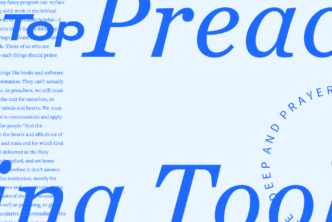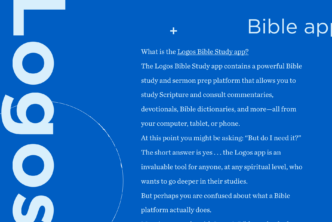Your songs teach theology. Your prayers teach how to pray. Your church calendar teaches what to prioritize.
Everything teaches—even the little things.
What lessons are you teaching?
For several years I attended a church where we stood for the reading of Scripture. Rarely did anyone say, “We do this to show reverence for God’s Word,” but no one had to. Standing said it all. Some students in our youth group had gone to that church since infancy. At roughly 52 services a year for 18 years (over 900 services), you can be sure all that standing made an impression. In fact, one of those students is now a college freshman searching for a new church, and he recently told me he misses standing for the reading of the Word.
The point isn’t that your church has to stand for the reading of Scripture. The point is that the decisions we make about our church service all teach a lesson.
Even the way we display Scripture teaches something.
Imagine you have never been to church. You’ve never opened the Bible for yourself, you’ve never heard it read aloud, and you’ve never heard a sermon. A pastor gets up to preach, and about 10 minutes in, the sermon references Jeremiah 29:11, “‘For I know the plans I have for you,’ declares the Lord, ‘Plans to prosper you and not to harm you, plans to give you hope and a future.’” The verse appears on the screen onstage, and the pastor continues to expound on that singular verse.
Something like this happens each week for several weeks, and one day you decide you want to read the Bible for yourself. Based on your experience, what do you do?
You might very well open to a random page, read a verse, and reflect.
And so would begin—unbeknownst to you—an unfruitful method of reading Scripture. (And let’s hope you don’t open to 2 Kings 2:24.)
Displaying Scripture in Church
It may seem nitpicky to talk about how we should display Scripture in church, but it’s something we do every week. All that repetition teaches something, so it’s worth assessing what’s being taught.
If you teach the Bible regularly, you probably teach the importance of context without even realizing it. For example, before expounding a text, you may summarize briefly what came before it, simply because you know you need to. When preaching topically, perhaps you relate your topic to its broader theological foundation. When cross-referencing a passage, maybe you quickly mention who wrote it and what the circumstances were.
These decisions are natural reflections of your commitment to reading Scripture in context. And in each of these instances, you not only teach others how to interpret Scripture—context, context, context—but also how not to interpret Scripture—by isolating texts.
The same goes for putting Scripture onscreen. Instead of putting just one verse onscreen, consider including the verses around it in a shaded font. You might also leave the verses displayed behind you as you preach, to show that you are speaking under the authority of God’s Word. These simple tweaks help you display Scripture like you preach Scripture: in context.
Proclaim’s On-Screen Bible
At Faithlife, we’ve developed a feature for this exact purpose. It’s called the On-Screen Bible, and it’s included with Proclaim Church Presentation Software. You can see a demo of it below (or test it out here), but basically it scrolls quickly to whatever passage you choose, starting at the beginning of the book. It only takes a second or two, but the subtext is that the passage is part of a whole.
Using the On-Screen Bible—like standing to read God’s Word—is a small change. But at 52 services a year, that’s a lot of repetition. And repetition is the best way to learn.
Learn more about Proclaim and the On-Screen Bible here.
***
Now through Oct. 31, get three months of Proclaim and Pro Media free when you purchase a Logos base package for the first time. You’ll get free setup and training from Proclaim, and you’ll enjoy access to 14,000+ motions and stills—just in time for the holidays.
Just check out with any Logos base package, and we’ll send you an email with instructions on how to get your 3 free months. Get a personalized base package recommendation.





